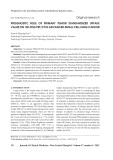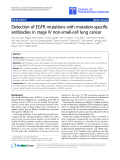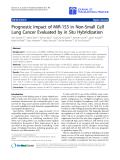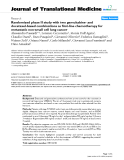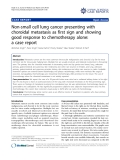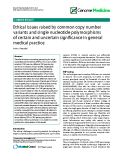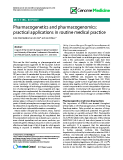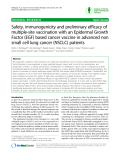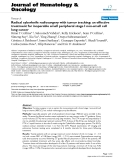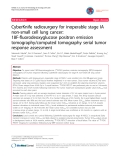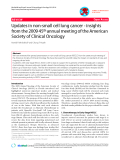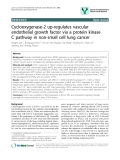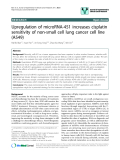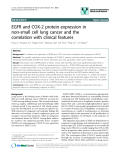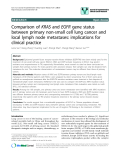
188
JOURNAL OF MEDICAL RESEARCH
JMR 184 E15 (11) - 2024
Corresponding author: Nguyen Van Hung
Hanoi Medical University Hospital
Email: dr.hungnguyen.hmu@gmail.com
Received: 20/09/2024
Accepted: 25/10/2024
I. INTRODUCTION
MANAGEMENT OF PNEUMONITIS POST-CONCURRENT
CHEMORADIATION AND IMMUNOTHERAPY IN PATIENTS
WITH ADVANCED LUNG CANCER: CASE REPORT
AND LITTERATURE REVIEW
Nguyen Van Hung1,2,, Nguyen Nhat Tan2
Pham Duy Manh1,2, Tran Trung Bach1,2,3, Trinh Le Huy1,2
1Hanoi Medical University Hospital
21Hanoi Medical University
3K Hospial
4Military Hospital 103
Immune-related pneumonitis is a rare but serious complication in patients with non-small cell lung
cancer (NSCLC) treated with durvalumab after concurrent chemoradiotherapy (CRT). We encountered a
61-year-old male with stage III non-small cell lung cancer (NSCLC) receiving concurrent chemoradiotherapy
followed by durvalumab maintenance therapy. After 1 cycle of durvalumab treatment, he developed
progressive dyspnea, dry cough, and low-grade fever. Chest CT scans revealed diffuse ground-glass
opacities in both lungs, indicative of immune-related pneumonitis. Durvalumab was discontinued, and
the patient was treated with high-dose corticosteroids and antibiotics. After one month, he fully recovered.
Durvalumab was cautiously resumed under close monitoring without recurrence of pneumonitis. Conclusion:
Early identification and management of immune-related pneumonitis are essential in NSCLC patients
receiving durvalumab. Reintroducing durvalumab after recovery may be safe with vigilant monitoring.
Keywords: Non-small cell lung cancer, durvalumab, immune-related pneumonitis, chemoradiotherapy,
immunotherapy rechallenge.
Non-small cell lung cancer (NSCLC) in the
locally advanced stage (stage III) accounts for
approximately 30% of newly diagnosed lung
cancer cases.1 Concurrent chemoradiation
(CRT) is the standard treatment for
unresectable stage III NSCLC patients.2 The
addition of durvalumab, a monoclonal antibody
targeting PD-L1, after definitive concurrent
chemoradiation (dCRT) has significantly
improved progression-free survival (PFS)
and overall survival (OS) in stage III NSCLC
patients.3,4
However, the use of durvalumab post-dCRT
is associated with risks of immune-related
pneumonitis (IRP) and radiation pneumonitis
(RP).5 Differentiating and managing these
two complications present significant clinical
challenges. We report a case of a stage III NSCLC
patient who developed IRP after durvalumab
treatment and subsequently resumed
durvalumab therapy after recovery, aiming to
discuss the diagnosis, treatment, and feasibility
of immunotherapy rechallenge. This study aims
to present a case of pneumonitis in a patient





